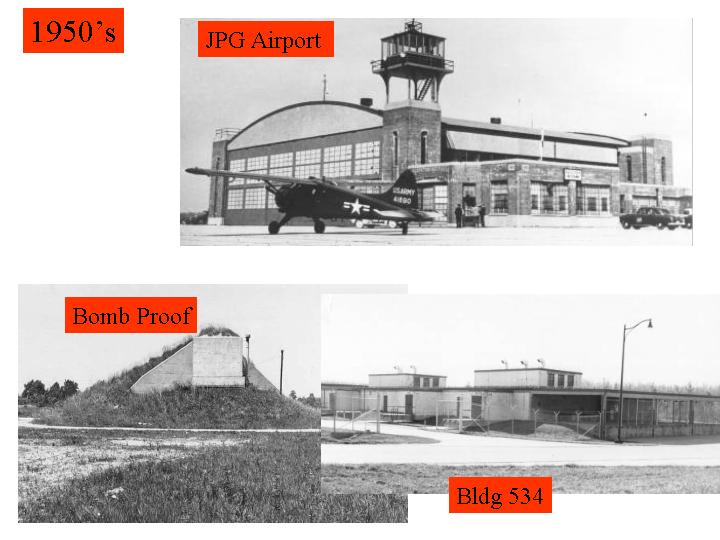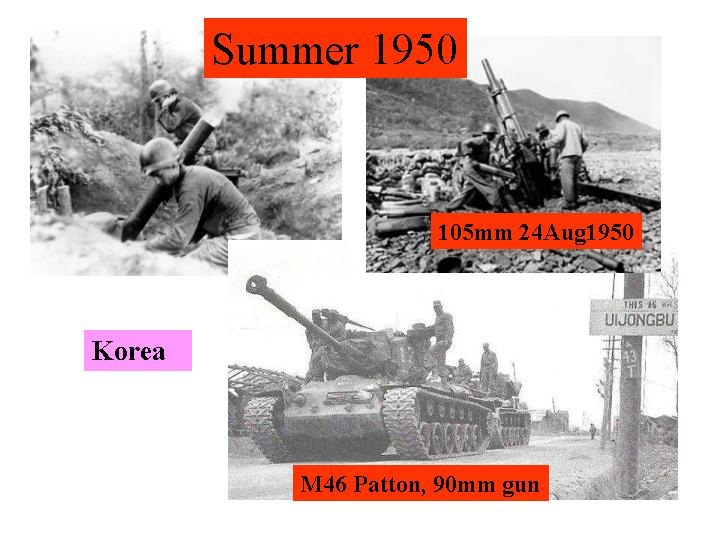JPG Testing during the Korean War
|
Home Shawnee Pioneer World War II Korea Vietnam Gulf War National Wildlife Refuge JPG Heritage Partnership
| Expansion and New Beginning:June 25, 1950 Approximately 4 a.m. (Korean Standard Time) on a rainy Sunday morning, the Democratic People's Army artillery and mortars open fire on Republic of Korea Army positions south of the 38th parallel, the line serving as the border between the two countries. at 11:00 a.m. North Korea announced a a formal "Declaration of War" which is now remembered as the "Korean War". The U. S. President , Harry S. Truman was notified of the invasion and returned from his home in Independence, Missouri to Washington, D. C. JPG did not stay on "Standby" for long. In February 1949, inquiries were initiated to determine the feasibility of reactivating the testing center. In the next 12 months, employees were hired for proof testing ammunition. in 1951 and 1952, new construction included barricades for the for the East, West, rocket assembly plants, and an assembly plant group for major caliber positions. In January 1952, JPG employed 813 employees; by Junw the figure climbed to 1170, reaching a peak of 1375 employees by the end of 1952. In 1952, the number of rounds fired reached 120,000. Employment levels made a jump in 1953, rising to a level of 1774 in August of that year, just before the end of the "Korean Conflict". The "Korean War" precipitated a second wave of building at the installation. For the most part these consisted of additional test firing and storage facilities, but with improvements to the infrastructure as well. 
Installation Improvement at JPG. 
Events occurring in Korea Simultaneously. July 27, 1953: The United States, North Korea, and China sign an armistice which ends the war, but fails to bring about a permanent peace. To this date a peace treaty has not been signed. A total of 29,557 service members (all services) died in battle or from battle related injuries during this conflict. In 1955, the mission of JPG was re-defined. In addition to ammunition testing, JPG accepted engineering functions such as automotive maintenance shops, calibrated ammunition components, and mobilization planning. By the end of 1959, the firing line extended three and 1/2 miles and consisted of 4 parallel ranges. With the end of the "Korean War", the wwork diminished at JPG. The work force came down and on march 20 1958, the last round was fired. On 31 March, official word came that once again JPG had been placed on standby-status. Home |